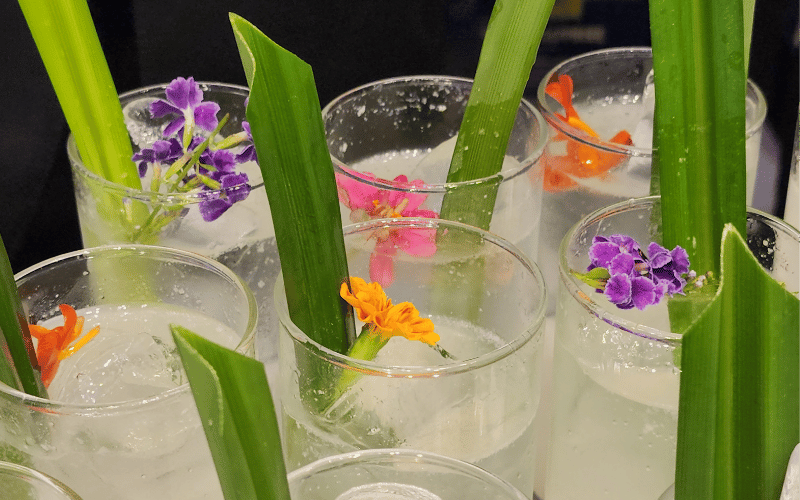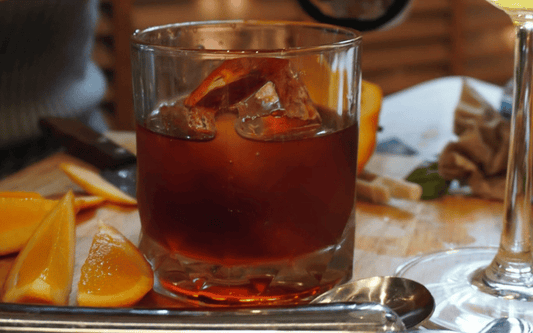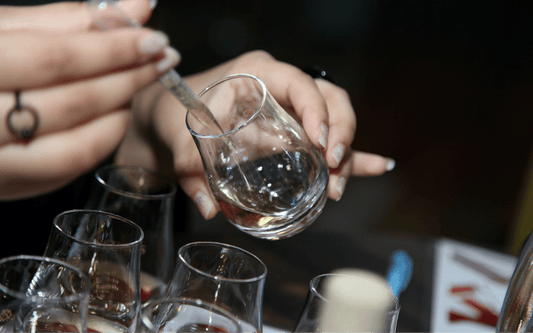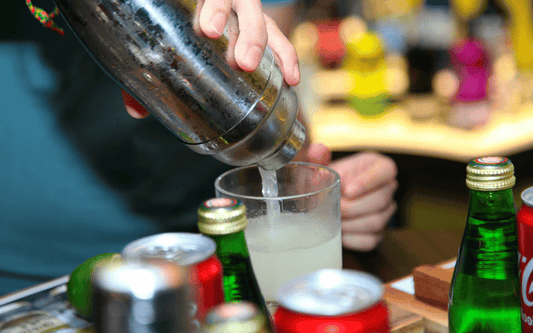GIN

Gin, a beloved and versatile spirit, has a fascinating history that dates back centuries. Its origins can be traced to 17th-century Netherlands, where it was initially distilled as a medicine using juniper berries for their perceived medicinal properties. Over time, gin evolved from a herbal remedy to a popular drink, especially in England during the 18th century's "Gin Craze." Today, gin is celebrated globally for its complex botanical flavors and its role as a base for countless classic and innovative cocktails.
The Production Process of Gin
Gin is primarily made through the process of distillation, which involves the following key steps:
-
Base Spirit: The process begins with a neutral base spirit, often made from grains like wheat, barley, or corn. This spirit serves as the canvas upon which botanicals impart their flavors.
-
Botanicals: Juniper berries are the cornerstone botanical in gin, providing its characteristic piney and resinous flavor. Beyond juniper, a wide array of botanicals such as coriander, citrus peel, angelica root, cassia bark, and orris root are used to create unique flavor profiles.
-
Distillation: The base spirit is redistilled with these botanicals in a pot still or column still. Some gins undergo multiple distillations to achieve a cleaner and more refined flavor, while others, like compound gins, infuse botanicals directly into the base spirit without redistillation.
-
Flavoring: After distillation, some gins are further flavored or infused with additional botanicals or ingredients to enhance their complexity.
-
Dilution and Bottling: The final distilled gin is diluted to bottling strength with water, typically to around 40-50% alcohol by volume (ABV), and then bottled for sale.
Categories of Gin and How They Are Produced
Gin is classified into several categories based on its production method and flavor profile:
-
London Dry Gin: Despite its name, London Dry Gin can be made anywhere in the world. It is characterized by a predominant juniper flavor and must not contain any added sweeteners or artificial flavors after distillation.
-
Plymouth Gin: A style with geographical indication, Plymouth Gin is made exclusively in Plymouth, England. It is slightly less dry than London Dry Gin and has a fuller body.
-
Old Tom Gin: A historic style that predates London Dry Gin, Old Tom Gin is slightly sweeter and often used in classic cocktails like the Tom Collins.
-
New Western or Contemporary Style Gin: This category encompasses gins that emphasize botanicals other than juniper, allowing for greater creativity and experimentation in flavor profiles.
-
Navy Strength Gin: Bottled at a higher proof (typically around 57% ABV), Navy Strength Gin originated from the British Navy's need for high-proof spirits that wouldn't spill gunpowder.
How to Choose Gin
When selecting a gin, consider the following factors:
-
Flavor Profile: Decide whether you prefer a classic juniper-forward gin like London Dry or a more contemporary style with pronounced citrus, floral, or herbal notes.
-
Cocktail Versatility: Consider how you plan to use the gin. London Dry gins are versatile and work well in a wide range of cocktails, while more unique styles like Old Tom or Navy Strength gins may be suited for specific drinks.
-
Brand and Distillery: Explore gins from established brands known for quality and craftsmanship. Artisanal and small-batch gins offer unique flavors and stories that larger brands may not.
-
Price and Value: Gins vary widely in price, from affordable options suitable for mixing to premium gins meant for sipping neat or in simple cocktails.
Popular Gin Cocktails
Gin's versatility makes it a favorite base spirit for a multitude of cocktails:
-
Gin and Tonic: A classic highball cocktail made with gin, tonic water, and a wedge of lime. Refreshing and effervescent, perfect for any occasion.
-
Martini: An iconic cocktail made with gin and dry vermouth, garnished with an olive or a twist of lemon. The Martini is elegant and timeless.
-
Negroni: A bittersweet cocktail made with equal parts gin, sweet vermouth, and Campari, garnished with an orange peel. The Negroni is bold and complex.
-
Tom Collins: A tall, refreshing cocktail made with gin, lemon juice, simple syrup, and club soda. The Tom Collins is citrusy and easy to drink.
-
French 75: A sparkling cocktail made with gin, lemon juice, simple syrup, and Champagne. The French 75 is celebratory and festive.
-
Gimlet: A simple cocktail made with gin and lime juice, often sweetened with simple syrup or served as a "dry" version with no added sugar.
Gin's rich history, diverse flavors, and versatility in cocktails make it a beloved spirit worldwide. Whether enjoyed in a classic Gin and Tonic, a sophisticated Martini, or a bold Negroni, gin offers endless possibilities for both novice and seasoned cocktail enthusiasts. From traditional London Dry gins to innovative contemporary styles, there's a gin to suit every taste and occasion. Explore the world of gin and discover your favorite expressions of this exceptional spirit. Cheers!




